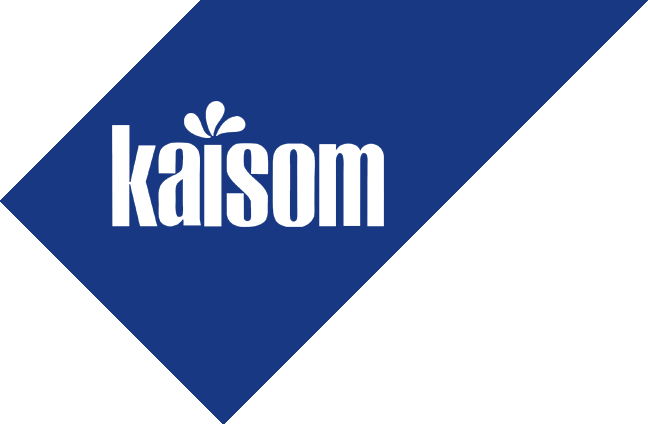How Nature Inspires Innovative Collection Strategies
1. Introduction: Understanding Nature as a Source of Inspiration for Collection Strategies
In the quest for efficient and sustainable collection systems, modern innovators are increasingly turning to one of the most sophisticated and adaptable sources: nature itself. Biomimicry—the practice of emulating biological processes—has revolutionized fields from engineering to logistics, offering time-tested strategies honed over millions of years of evolution. By studying natural systems, we gain insights into how to optimize resource gathering, distribution, and collaboration.
Collection strategies are fundamental across various domains such as supply chain management, ecological conservation, data gathering, and even gaming. These strategies involve methods for efficiently acquiring, distributing, and utilizing resources, often under constraints like limited capacity or environmental pressures. This article explores how principles derived from nature can inspire innovative approaches, leading to systems that are more adaptive, resilient, and sustainable.
Our focus is to bridge the abstract concepts of natural processes with tangible examples, demonstrating their practical applications. Whether designing a resource distribution network or developing engaging game mechanics, understanding nature’s strategies opens pathways to more effective solutions.
Contents
- Fundamental Principles of Nature-Inspired Collection Strategies
- Case Studies of Nature-Inspired Collection Tactics
- Modern Examples and Applications
- Integrating Natural Strategies into Innovative Collection Design
- Case Study: Pirots 4 – Comprehensive Guide as a Modern Illustration
- Non-Obvious Insights: Deepening the Understanding of Nature-Inspired Strategies
- Challenges and Limitations of Mimicking Nature
- Future Trends: Evolving Collection Strategies Inspired by Nature
- Conclusion: Harnessing Nature’s Wisdom for Innovative Collection Strategies
2. Fundamental Principles of Nature-Inspired Collection Strategies
a. Adaptation and Evolution as Models for Flexibility in Collection
One of nature’s most powerful tools is its ability to adapt. Species evolve over generations to better exploit their environments, adjusting behaviors and physical features in response to changing conditions. This dynamic flexibility offers a blueprint for designing collection systems that can adapt to fluctuating resource availability or shifting environmental constraints.
For example, in supply chain logistics, adaptive algorithms can modify routes based on real-time data, much like animals alter their foraging paths when encountering obstacles. These systems mirror natural evolution, continuously optimizing performance to meet current needs.
b. Efficiency Through Resource Optimization Observed in Ecosystems
Ecosystems exemplify efficiency, where each organism plays a role in resource utilization without waste. Nutrients cycle through environments, and energy flows are optimized for maximum benefit. This principle can be applied to resource collection, aiming to minimize waste and maximize yield.
Innovative systems can incorporate feedback loops and resource recycling, akin to natural nutrient cycles, to create sustainable collection processes. For instance, in data collection, prioritizing high-value information reduces redundant efforts, reflecting ecosystem efficiency.
c. Decentralization and Swarm Intelligence as Collective Approaches
Many natural systems operate without central control. Swarm intelligence, observed in ant colonies or bird flocks, demonstrates how simple individual behaviors can lead to complex, efficient collective actions. Such decentralization enhances robustness and flexibility.
Applying this to collection strategies—like distributed sensors or autonomous agents—can yield systems resilient to failures and capable of tackling large-scale problems through cooperation, much like a swarm working together seamlessly.
3. Case Studies of Nature-Inspired Collection Tactics
a. Animal Foraging Behaviors and Their Application to Resource Gathering
Animals have developed efficient foraging strategies to locate food with minimal energy expenditure. For example, wolves hunt in packs, coordinating their movements to corner prey, enhancing success rates. Similarly, algorithms inspired by such pack behaviors optimize resource search patterns in complex environments.
In logistics, swarm algorithms mimic these behaviors to efficiently allocate delivery routes, reducing fuel consumption and delivery times.
b. Plant Seed Dispersal Mechanisms Informing Distribution Strategies
Plants disperse seeds through various natural mechanisms—wind, animals, water—to maximize spread and survival. The dandelion’s wind dispersal or the fleshy fruits eaten by animals exemplify strategies to reach new niches.
Distribution systems can emulate these mechanisms by leveraging transportation networks or automated dispersal methods, ensuring resources are widely and efficiently distributed.
c. Insect Hive Organization and Collaborative Collection Efforts
Bees exemplify highly organized collective effort within hives, where individual roles contribute to the colony’s survival. Their foraging, communication through dances, and resource sharing demonstrate decentralized coordination.
Modern collaborative collection systems—such as distributed data networks—can draw inspiration from these behaviors to optimize teamwork and information sharing.
4. Modern Examples and Applications
a. How the Alien Invasion Feature Exemplifies Collection by Column—Mimicking Natural Aggregation
In some modern games, features like the Alien Invasion demonstrate collection by column, where entities naturally aggregate into groups, similar to natural phenomena such as flocking birds or schooling fish. This behavior enhances efficiency, allowing large numbers to be collected or managed simultaneously.
b. The Gem System with Upgrade Levels and Increasing Payouts as an Analogy for Progressive Accumulation
Progressive systems—like gem upgrades in games—mirror natural growth processes. As resources accumulate, their value and payout increase, akin to how trees grow larger and produce more seeds over time. This principle encourages sustained effort and rewards persistence.
c. Pirots 4’s Space and Pirate Themes with Cascading Mechanics Reflecting Natural Cascading Processes
Games like Pirots 4 incorporate cascading mechanics, where actions trigger subsequent effects—resembling waterfalls or food chains—creating a continuous flow of resources. Such mechanics emulate natural cascading processes, fostering engaging and dynamic gameplay.
5. Integrating Natural Strategies into Innovative Collection Design
a. Designing Systems that Adapt and Evolve Like Natural Entities
Effective collection systems should incorporate adaptability, allowing them to respond to changing environments. Using machine learning algorithms, designers can create platforms that learn from interactions and evolve, much like species adapting over generations.
b. Leveraging Collective Intelligence Inspired by Swarm Behaviors
Decentralized, swarm-inspired systems distribute tasks among autonomous agents, enhancing robustness. For example, drone fleets collecting environmental data can coordinate without central control, increasing efficiency and resilience.
c. Balancing Efficiency and Sustainability in Collection Methods
Sustainable collection mimics natural resource cycles, emphasizing minimal waste and environmental impact. Strategies include recycling, adaptive resource allocation, and renewable energy use, ensuring long-term viability.
6. Case Study: Pirots 4 – Comprehensive Guide as a Modern Illustration
a. How Pirots 4 Embodies Natural Principles Through Its Mechanics
Pirots 4 exemplifies natural principles by integrating cascading mechanics, progressive upgrades, and thematic storytelling that reflect natural growth and aggregation. The game’s layered mechanics create an ecosystem of resources, encouraging players to adapt strategies similar to natural foraging or growth patterns.
b. The Role of Thematic Storytelling in Engaging and Educating Users About Natural Strategies
By embedding natural themes—space, pirates, cascading waterfalls—Pirots 4 not only entertains but also subtly educates players about natural processes. The narrative immerses users in a world where natural laws influence mechanics, fostering intuitive understanding.
c. Lessons Learned from Pirots 4’s Design That Can Be Applied Elsewhere
The success of Pirots 4 demonstrates that integrating natural principles into design enhances engagement and sustainability. Systems that mimic natural adaptability, cooperation, and cascading effects can be applied across industries—from resource management to educational platforms.
For those interested in exploring more about innovative collection systems inspired by these principles, visiting kknackered Pirots 4 my lucks cursed 🤑 provides valuable insights, illustrating how modern design can embody timeless natural strategies.
7. Non-Obvious Insights: Deepening the Understanding of Nature-Inspired Strategies
a. The Role of Randomness and Chaos in Natural Collection Processes and Their Utility
Natural systems often incorporate elements of randomness—such as dispersal directions or unpredictable weather—that contribute to resilience and diversity. Embracing controlled chaos in collection strategies allows systems to adapt to unforeseen changes and avoid stagnation.
b. How Redundancy and Resilience in Natural Systems Inform Robust Collection Designs
Redundancy—multiple pathways for resource flow—enhances resilience, enabling systems to withstand failures. In design, incorporating backup mechanisms and diversified channels ensures continuous operation even under adverse conditions.
c. The Impact of Environmental Cues and Signals in Optimizing Collection Efforts
Animals respond to environmental cues—like scent trails or visual signals—to optimize foraging. Similarly, collection systems can utilize environmental data and signals (e.g., sensor inputs) to dynamically adjust actions, increasing efficiency.
8. Challenges and Limitations of Mimicking Nature
a. Potential Oversimplifications and Misconceptions
While biomimicry offers powerful insights, oversimplifying complex natural processes can lead to ineffective or misguided designs. For instance, copying superficial features without understanding underlying principles may cause systems to underperform.
b. Ethical Considerations in Biomimicry
Replicating biological systems raises ethical questions, especially when involving genetic or ecological interventions. Respecting natural ecosystems and ensuring sustainability is essential to avoid harm.
c. Technical Constraints and Adaptation Hurdles
Technological limitations—such as sensor accuracy or computational capacity—can hinder implementation. Adapting natural strategies to human-made systems requires overcoming these technical challenges thoughtfully.
9. Future Trends: Evolving Collection Strategies Inspired by Nature
a. Advancements in AI and Machine Learning Modeling Natural Behaviors
Artificial Intelligence increasingly enables systems to mimic complex natural behaviors, improving decision-making and adaptability. Machine learning models trained on ecological data can optimize collection in real-time, akin to natural responses.
b. Cross-Disciplinary Innovations Combining Ecology, Engineering, and Game Design
Integrating insights from ecology, engineering, and entertainment fosters innovative solutions—such as gamified resource management systems that educate while engaging, inspired by natural ecosystems.
c. The Potential of Emergent Properties in Designing Autonomous Collection Systems
Emergent behaviors—unpredictable yet beneficial outcomes arising from simple interactions—can be harnessed to develop autonomous systems that self-organize and adapt, much like natural colonies or neural networks.
10. Conclusion: Harnessing Nature’s Wisdom for Innovative Collection Strategies
“By observing and respecting the strategies honed by nature, we can





